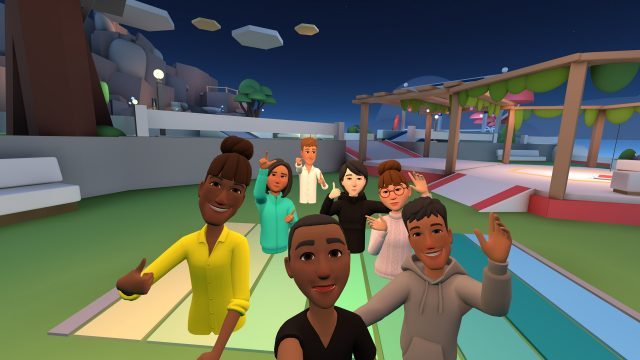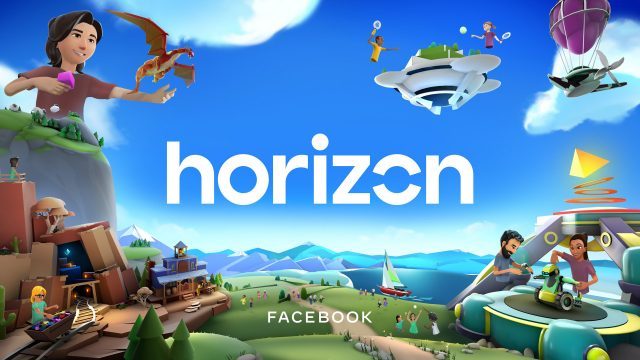Facebook is soon to launch the invite-only beta of Horizon, on Quest and Rift, the company’s latest attempt at creating a first-party social VR experience. We previewed the beta and got to see several user-created mini-games and explored the built-in creation tools.
Horizon is designed as a place for Oculus users to hang out, play together, and create together. You can apply to join the beta here, which Facebook says will begin opening up “in the coming weeks.”
Rather than being one continuous space, Horizon is organized into discrete rooms called ‘Worlds’ which can support up to eight players at a time.
Everything in Horizon has been built with integrated creation tools which allow users to make their own rooms with hand-crafted 3D models and basic scripting, allowing for the creation of some surprisingly complex mini-games. Horizon also allows for real-time collaboration, enabling users to build and test Worlds together.
I had the chance to jump into Horizon, see some of the user-generated Worlds in action, and take a look at the integrated creation tools that make them possible.
Starting in the Plaza


Moving from the Plaza to another World is as simple as clicking a button and waiting a few moments while the new World loads. If you’re in a Party with other Horizon players (up to eight), you’ll all end up in the same instance of a World if you visit at the same time.
Worlds as Mini-games
Creating Worlds
When in creator mode you can become a giant to work on large-scale structures, or scale yourself down to work on little details. The core of creating is Horizon is a set of light-weight modeling tools which allow you to combine and modify primitive shapes to build environments and props.
Basic scripting is also possible in Horizon, allowing creators to add game logic to their Worlds. I haven’t had the chance to dive into the scripting tools yet, but from my experience as a player, it seems that they can enable some surprisingly complex behaviors.
In the escape room puzzle game, there were buttons outside of the room which would change the direction of gravity acting on the cube (but not the rest of the world), causing it to fall in different directions.
I’ve also seen Worlds where one object could be used as a sort of ‘remote control’, meaning the movements of one object would be mirrored by a much larger object. This allowed players to ‘puppeteer’ a large robot at a distance.
Building Together on Both Headsets
In Horizon you can add friends as collaborators to your Worlds and work with them side-by-side in real-time. While you’re modeling a skyscraper, your friend can work on the colors, or take your completed skyscraper, duplicate it several times, and then arrange the buildings into a cityscape. Or you can both work on an entirely different part of the world while bouncing ideas off of each other.
– – — – –
From my hands-on time with Horizon so far, it feels like a cross between the mini-games of Rec Room and the user-generated creations of VRChat. I expect that Horizon’s collaborative building tools will be nearly as popular as simply experiencing the Worlds on offer, thanks to the relative ease-of-use and collaboration capabilities.
Facebook says it expects that one day Horizon will support many people in one World, but for now there’s a limit of eight. And while its nice that Rift and Quest users can play and build together, unfortunately Facebook isn’t yet committing to supporting any other headsets—making Horizon more of a ‘social Oculus experience’ than a ‘social VR experience’.


